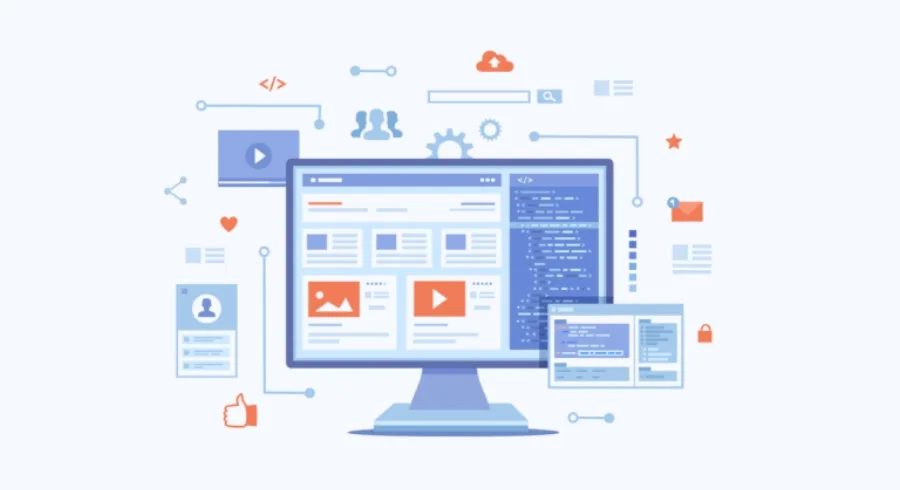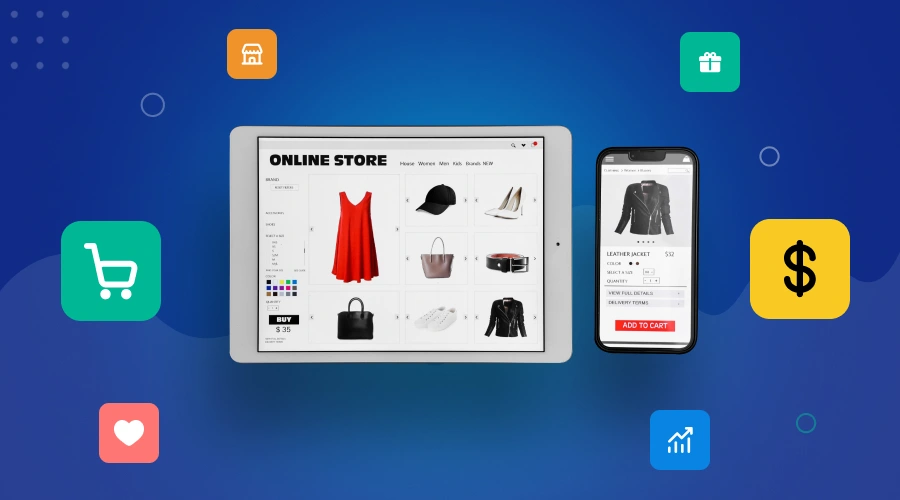Business owners and website designers must stay up-to-date with the latest trends and practices of web design. This is important to meet the user expectations.
As the online world continues to grow and evolve, designers are faced with new challenges and opportunities. They must create designs that are not only aesthetically pleasing but also functional, accessible, and responsive across a variety of devices. With the latest trends in web design, designers can create websites that are engaging, user-friendly, and future-proof.
Let’s dive into the latest trends in web design and explore how they are shaping the future of the internet.
Responsive Design
Responsive design is crucial in today’s world, as over half of all internet traffic comes from mobile devices. Websites designed with mobile users in mind adapt to different screen sizes and resolutions, which enhances the user experience. Responsive design achieves this through flexible grid systems and media queries, allowing for the optimization of layouts for different devices. Additionally, responsive design improves search engine rankings because Google now prioritizes mobile-friendly websites in its search results. By designing with mobile users in mind, websites can reach a wider audience and increase their visibility.
Minimalism
Minimalism is a popular design trend due to its simplicity and elegance, characterized by clean lines, white space, and typography-focused layouts. It improves website load times by using fewer graphics and can reduce bounce rates by being less distracting. However, it may not be suitable for websites requiring a lot of information or functionality, and some users may find it uninteresting. Hence, it’s important to consider your audience and website goals when opting for minimalist designs.
Dark Mode
Dark mode is a popular design trend that uses a dark background with light text to improve readability and reduce eye strain, particularly in low-light environments. It is also energy-efficient, which improves battery life on mobile devices. Dark mode can be more accessible for users with visual impairment who find it easier to read light text on a dark background. However, it may not be suitable for websites with a lot of images or video, as some users may prefer the traditional light background. It’s important to consider your audience and website goals before implementing dark mode.
3D and Immersive Design
3D and immersive design is a popular trend that uses 3D graphics and animations to create an immersive user experience. It improves engagement and retention by creating visually stunning and interactive environments and showcasing products or services in a dynamic way. However, it can be complex and resource-intensive, making it unsuitable for every website or budget, and overwhelming for some users. Hence, it’s important to consider your audience and website goals before opting for 3D and immersive design.
Artificial Intelligence
AI is transforming web design by providing personalized experiences, optimizing performance, and automating tasks. Using machine learning, designers can create websites that adapt to users’ preferences and improve conversion rates by analyzing user data. However, AI may not be suitable for every website or budget due to the need for data collection and analysis, expertise in machine learning and programming, as well as potential privacy concerns. It’s essential to consider the audience and website goals when deciding to use AI.
Voice User Interface
Voice user interface (VUI) is an increasingly popular trend in website design that involves using voice commands to navigate and control websites. VUI can improve website accessibility for users with disabilities or limited mobility, and it can provide a more natural and intuitive way to interact with websites. However, VUI is still a new technology and requires careful consideration of user needs and expertise in speech recognition and natural language processing. It may not be suitable for every website or audience, and some users may prefer traditional input methods or face language or accent barriers.
Accessibility
Accessibility is a crucial aspect that should be integrated into every web design project to create websites that can be used by people with disabilities. By designing with accessibility in mind, designers can create more inclusive and user-friendly websites that can also improve the website’s SEO and user experience for everyone. However, it can be a complex issue, and designers must work with accessibility experts and test their websites with users who have disabilities to ensure they meet their needs and preferences.
Design for Mobile-First
Designing for mobile first is a trend that prioritizes the design of websites for mobile devices. By focusing on simplicity, speed, and functionality, designers can create engaging and user-friendly websites that perform well even on slow networks. Designing for mobile-first can improve website performance and the user experience for all users, but it can be challenging and may require sacrificing certain features. It is important to consider your audience and website goals when deciding whether to adopt a mobile-first design approach.
Conclusion
Web design is constantly evolving, and it’s important for designers to stay updated with the latest trends and practices in order to create engaging, user-friendly websites. Remember to always consider your audience and website’s goals when deciding the trends to use. Not every trend will be suitable for every website or audience, so it’s important to choose the trends that best meet your needs and preferences. By staying updated with the latest trends in web design, you can create websites that are attractive, functional, and accessible for everyone.







